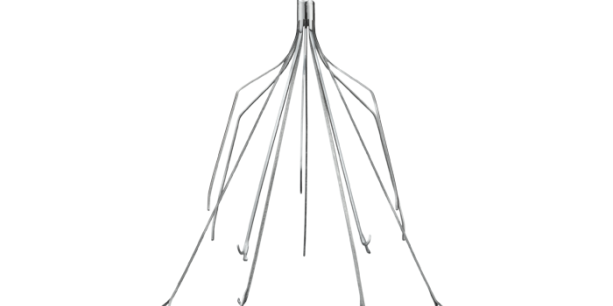As more and more plaintiffs come forward to file suit against C.R. Bard for injury and harm suffered as a result of Bard’s retrievable inferior vena cava filters, the question as to whether Bard was aware of the safety risks associated with the filters continues to be asked. IVC filters are small, cage-like devices with metal, “spider” legs, which are implanted in patients at risk of a pulmonary embolism who are not candidates for blood-thinning drug therapy. While the filter’s design was meant to stop PE—a blood clot to the lungs—in fact these IVC filters may bring their own serious, even deadly, side effects.
MORE THAN 900 ADVERSE EVENT REPORTS RELATED TO IVC FILTERS
As of 2015, after the IVC retrievable filters have been on the market for approximately twelve years, the FDA has received close to 1,000 adverse event reports related to the filters. One problem, according to the FDA, is that while there are both permanent and retrievable IVC filters on the market, only about a third of the retrievable IVC filters are actually ever removed. Those retrievable filters left in the patient, can result in perforations, migration of the devices, fracturing of the filters, and embolization when the device components become detached.
WHEN RETRIEVABLE FILTERS CANNOT BE REMOVED
One study done in 2013, took a look at IVC filter implantation among patients. Six hundred and eighty of the 952 patients were implanted with a retrievable IVC filter, and 608 did not have their IVC filter removed. Fifty-eight patients had a successful removal of their IVC filter. Among the remaining patients, 8 did not have a successful removal of the IVC filter because the device was embedded, 3 patients could not have the filter removed because it projected into a surrounding blood vessel, 2 were unable to have a successful filter removal due to the device migrating to an abnormal position, and the final patient developed a blood clot inside the filter, therefore it could not be removed. Of those 13 patients, eleven had their filters implanted for a minimum of 85 days.
HOW THE LEHMANN REPORT MAY IMPACT BARD IVC FILTER LAWSUITS
It is documented that C. R. Bard received complaints associated with malfunctions of the IVC retrievable filters as far back as 2004. These complaints alleged the legs or struts of the IVC filters were prone to breakage, and, once broken, could travel to other body parts, leading to serious injuries. At that time Bard contracted with Dr. John Lehmann to put together a report which would compare fracture and migration risks of these new, retrievable filters to older models.
The goal of this report was to lend assistance for ongoing and anticipated IVC filter lawsuits. The Lehmann report was distributed to a handful of employees, along with the directive the report was to remain confidential. When Bard IVC product liability cases arose later, with allegations the IVC retrievable filters were unsafe, the question of whether the Lehmann report should be protected under the work-product doctrine became a central issue. In a 2012 Bard G2 IVC filter claim, the Lehmann report was accidentally disclosed. Bard asked that the report be destroyed or returned, claiming it was protected.
A California court denied Bard’s request that the document be returned to them in 2012, but later a Nevada Court ruled plaintiffs could not use the report. A number of other court rulings related to whether the Lehmann Report is covered by work-product doctrine have been handed down and not all of those courts agree the Lehmann report satisfies the work-product doctrine. This issue is incredibly important from the plaintiffs’ point of view, as the report shows Bard was fully aware of the safety risks associated with their IVC retrievable filters, yet continued to manufacture and sell the devices.
GETTING THE LEGAL HELP YOU NEED
If C.R. Bard, the manufacturer of the IVC filters which caused injury and harm to a number of consumers was aware of the problems associated with the filters, yet failed to disclose those risks to the FDA, the company may be liable for failure to warn. If you or a loved one suffered injuries after having a Bard IVC retrievable filter implanted, you may be able to seek compensation. If you would like to speak with one of our attorneys about your rights and legal options, contact our office right away by calling us at (877)-696-3303 or by filling out this form. It is in your best interests to act quickly. There is a time limit in each State for filing injury claims known as the Statute of Limitations. If a claim is not filed against the manufacturer, marketers, retailers and healthcare providers before the statute of limitations expires, an injured party will not be able to bring a claim against those liable for their injuries.



